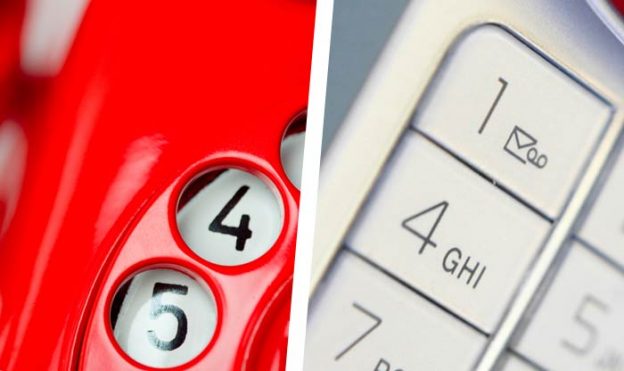Pulses vs Tones: What is the Difference Between Pulse and Tone Dialing

You’ve probably never thought about the mechanisms inside your land line or your cell phone. You pick up the phone, dial it and it signals the number you dialed to ring on the other end.
But have you ever stopped to think about how your phone knows what to do when you dial it? In fact, there’s a dialing mechanism in your phone that may be specific to the time that you bought it; not-so-recently American telecommunications companies switched over to something “tone dialing”. This article discusses the differences between this method and its predecessor, “pulse dialing”.
The History of Dialing
From the onset of telephones, the only method of dialing was pulse dialing, coinciding with the invention of rotary phones. These phones, which are marked by their round dials, sent a pulse every time you rotated past a number, signaling the final number by transferring each sequence.
Because of this system, the person dialing had to let the wheel return all the way back to its resting place before dialing the next number. It worked, but it was inconvenient; in fact, the birth of tone dialing came from the urge to find a quicker, more convenient method of dialing a phone.
The tone dialing method consists of a numerical key pad that sounds a different tone for each button (number), coding a unique phone number with which to communicate.
Switching from Pulse to Tone
Initial trials of the tone dialing system were inconsistent, so it didn’t catch on until about two decades after it was invented. In 1963, the tone dialing system was perfected, and became the standard for telecommunications companies across the country, replacing the outdated pulse dialing (and now-obsolete rotary phone, though these hung around for decades after).
The advantages of tone dialing were simple: Connecting to a call via tone dialing is quicker, more convenient and easier, being done on a device with a keypad instead of a rotary dial. In fact, one could speculate that if tone dialing would have never been invented (or perfected) cell phones as we know them would have never followed.
Key Takeaways
At their core, both systems are used as means to the same end; establishing an internet connection and signaling which number to place a call.
While pulse connections take a considerable amount of time to place, tone dialing is quick, easy and convenient. You may have experience yourself, or have at least heard your elders telling stories about the frustrations of placing a call with rotary phone.
We perfected a new method of dialing to save time, but in the absence of any laws mandating that every person update their phone system, most phones have a switch on their base that toggles between tone and pulse to ensure backwards compatibility. The switch to tone dialing was developed to be more convenient than pulse dialing, but it established a basis for smaller, sleeker phones as time moved forward.